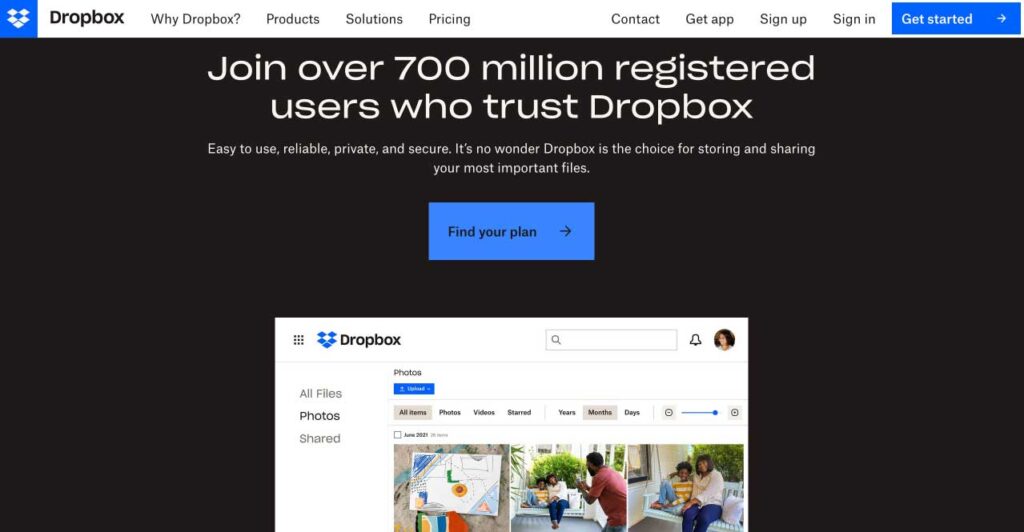The issue of storage for video files is always relevant for videographers. Someone prefers classic hard drives, and someone gives a chance to modern digital technologies and chooses online cloud storage services. What is the best option? There is no single correct answer as well as there is no best storage solution. So, in this article, we will consider the most popular ideas to make the workflow more pleasant.
To understand what file storage option is the best for you, you should ask yourself a few questions.
- How many projects do you plan to film?
- What is the duration of each project?
- How long do you plan to keep the files?
Let’s imagine you have 8 weddings planned for the next month. You work alone, so there is 1 camera. Each wedding shoot lasts an average of 8 hours. In total, you will get 64 hours of footage.
Depending on the camera you have, each hour of 4k video will take up a different amount of space. On average, it is 45-60 GB. So, to store files for a month of your work, you need at least 2.8 TB of storage space. To determine the size of files for one hour of shooting, you can conduct an experiment and calculate or enter the name of your camera into online calculators. Now, there are many of them on the Internet.
Now, let’s imagine you have 2 or more videographers. In this case, from each wedding, you will get footage from 2-5 cameras. Then the figure we got should be multiplied by the number of cameras. And for sure, you want to store video files for more than one month.
Types of video storages
There are three main options for file storage.
Cloud storages
This is an online storage service that you can access anywhere in the world from any device. Thus the use of cloud storage is very convenient and preferred by many videographers, especially for those who work not only in their city and for shooting destination weddings.
It is also possible to share access with others at any time convenient for you, using a PC, laptop, or smartphone. If you work with other video makers and video editors – using cloud storage services can help you organize the work in the best way.
However, if you are in a place where the Internet is slow, downloading files can take a long time.
External hard drives & SSD
This is a device that you can plug into your PC or laptop port.
Modern hard drives take up little space, and you can also bring them anywhere you like. The upside is that you can load files pretty quickly on the hard drive. However, the downside is that you cannot share files with anyone else.
Many videographers prefer to use hard drives as
- an archive of files
- a video backup
In recent years, SSDs (solid-state drives) have replaced hard drives due to their convenience and higher speed.
Network Attached Storage (NAS)
The third option you can use to handle files is NAS. This device can store all the files you need on the server. The difference from the classic hard drive is that it does not have to connect directly to your PC or laptop – it does it using the network. Moreover, if you make all the settings correctly, you can give access to your files to other people.
If earlier NAS was used only in large corporations, now these devices have become available to every person.
Cloud storages: What to choose and why
There are many different cloud storage services on the market, each with its own unique features and benefits. We will tell you about the most popular of them.
1. Dropbox

Dropbox is the most popular and widespread cloud storage service for all operating systems. Its audience is about 100 million people. You can upload various types of files to it, and they will always be safe. Dropbox drive allows to connect many third-party services for project management, as well as for teamwork.
Key benefits of Dropbox:
- adapted to all popular operating systems;
- USB key for enhanced security;
- information encryption via 256-bit AES and SSL;
- excellent synchronization;
- no data and log recovery limit.
For quite a while, Dropbox has provided premium users with unlimited storage plans. However, because of the growing vogue of the service each year, they are now implementing restrictions on 35 TB plus an additional 5TB credit of pooled storage for users with Dropbox Advanced plans. Every next TB will be paid ($10/month if purchased monthly or $8/month if purchased annually).
2. Google Drive

This is a Google development for everyone who uses and loves its products. It’s a simple, secure and fast service to store and manage your files. This option is one of the most obvious for owners of Android devices since the Google Drive app is natively installed on smartphones and tablets based on this OS. Its key plus is deep integration with many Google services.
Key features of Google Drive:
- functional and user-friendly interface;
- support for 30 file formats;
- several levels of shared access to files;
- integration with mail and document service from Google;
- backup.
3. OneDrive

This is a Microsoft product released in 2007. It will appeal to everyone who uses the company’s products in their work. This cloud drive is integrated with Windows 10 and many Microsoft services. For example, OneDrive automatically syncs all files between Word, PowerPoint, and other office programs across devices.
Key features of OneDrive:
- integration with Microsoft Office Online;
- remote access to content;
- advanced folder management options;
- image preview.
The considered cloud storages are modern and high-quality products for client use. Each of them has its own advantages, but the professional specialists of our company still prefer Dropbox in their work as the most convenient and reliable service. It does an excellent job of handling all the storage and file access tasks required for video editing.
FAQ
Can I use an external hard drive for video editing?
Of course, you can use an external hard drive for video editing and video production. However, the use of cloud storage is becoming more common, thanks to a number of advantages for filmmakers, such as access to files from any device, backup, and much more.
Which is better SSD or HDD for video editing?
Both SSD and HDD drives are useful to a video editor. SSD is more expensive, but it is fast and will boost video editing and playback performance. Large-capacity HDDs are slow but cheap, so they are ideal for archiving completed video projects.
How much storage do you need for video editing?
For most videographers and video editors who work on a few HD1080p and some 4K projects, a 1TB may be enough. But if you are regularly working on video projects, especially if to speak about high bitrate 4K video and even 8K video, you’ll need a higher capacity drive.
How do I handle a large video file?
To store large video files, you need a large HDD or SDD. To send such files, it is best to use cloud storage.
How much storage do I need for 4k video?
An hour of 4K video uses about 45-60 GB of storage space. Accordingly, the size of the required storage will depend on the length of your video.
How much storage does 1080p video take up?
One hour of 1080p video should not exceed 10-15 GB. Next, you can calculate the amount of storage space you need based on the length of your video.



